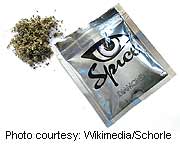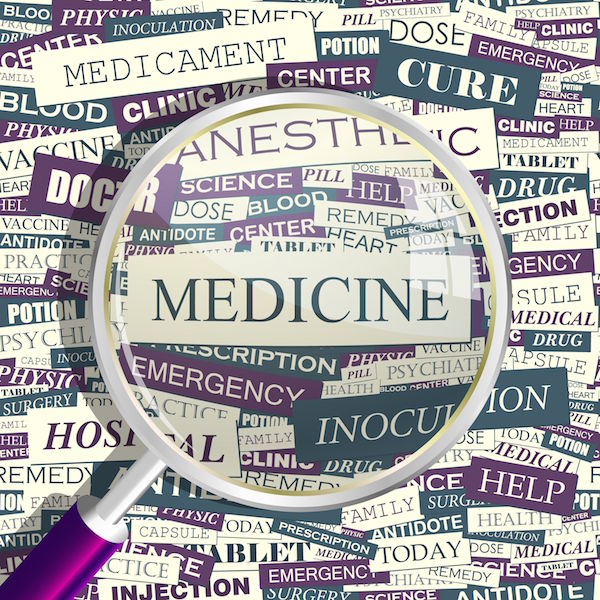
TUESDAY, Dec. 4 (HealthDay News) — U.S emergency rooms tended to more than 11,400 cases of drug-related health complications specifically linked to the use of synthetic marijuana in 2010, a new government report reveals.
Released Tuesday, The DAWN Report from the U.S. Substance Abuse and Mental Health Services Administration (SAMHSA) attaches a hard figure to the potential health risks associated with the growing use of synthetic marijuana. The report also puts such use in context, observing, for example, that actual marijuana use accounted for far more ER visits (exceeding 461,000) in the same time frame.
“It’s not an epidemic,” acknowledged Rear Admiral Peter Delany, director of SAMHSA’s Center for Behavioral Health Statistics and Quality. “But it’s a growing problem. And people need to be thinking about it, and how we’re going to deal with it.”
Since it first came on the scene in the United States in 2008, synthetic marijuana has commonly been sold, with a wink and a nod, under the guise of being an innocuous “herbal incense,” according to the White House Office of National Drug Control Policy.
Until recently, however, customers have sought it out — under names like “Spice” and “K2” — as a legal alternative to real marijuana, based on its reputation as being able to prompt a similar high.
But though it’s varying ingredients are typically sprayed in liquid form on top of plant materials, such so-called “fake” marijuana is exactly that: an entirely synthesized and unlabeled chemical concoction, rather than a naturally grown plant.
In the last few years, synthetic marijuana has seen a rapid increase in popularity, particularly among American teens who initially could turn to local convenience stores and the Internet for legal access. The authors of the report point to a 2011 drug-use study that found that more than 11 percent of high school seniors admitted having tried the drug in the prior year.
In light of such numbers, health risk concerns led to sales restrictions in 38 states, and in the summer of 2012 the U.S. Food and Drug Administration imposed a wholesale ban on all sales of synthetic cannabinoids.
The current SAMHSA report uses public health surveillance data on all 2.3 million drug abuse or misuse-related visits to U.S emergency departments in 2010 involving both male and female patients between the ages of 12 and 29 (who account for the bulk of users).
Male patients made up 78 percent of synthetic pot emergencies, the report team noted, compared with 66 percent among authentic marijuana emergencies.
Most (59 percent) of those seeking emergency care following synthetic marijuana use were not using any other drug at the time, while 36 percent had used it in conjunction with one other drug such as actual marijuana, alcohol or prescription drugs.
Most of the synthetic pot patients were ultimately discharged directly from the ER, with less than one-quarter requiring follow-up care after their initial visit, the report noted.
Nevertheless, Delany pointed out that the host of complications that can land a synthetic pot user in the emergency department in the first place are not to be taken lightly.
“I think parents and communities need to become more informed about this drug,” Delany said. “They should be aware that you don’t know what you’re buying when you buy it. You don’t know the potency and the chemical compound. And they should also know that young people who use it are ending up in the ER, due to high blood pressure, nausea, vomiting, anxiety, agitation and sometimes seizures. So you can’t say this is a safe drug. Especially if you decide to mix it with other chemicals.”
The thought is seconded by Dr. Adam Bisaga, a professor of psychiatry at Columbia University and an addiction psychiatrist with the New York State Psychiatric Institute.
“Certainly in the context of other forms of drug abuse, the numbers they show here related to synthetic marijuana are nowhere near the numbers associated with, say, painkillers,” Bisaga said.
“But with something sold as part of a ‘spice package’ you might think you’re smoking herbs. And they’re not herbs. You’re not smoking tea or oregano. These are chemicals that are synthesized from scratch to act on the same receptors in the brain as real marijuana. But they are just pure chemicals, with no quality control and with the real potential to be toxic,” he explained.
“So there was a time when selling them, and probably the use of them, was perceived as non-harmful,” Bisaga noted. “But hopefully now, with the bans that have been put in place and the release of this kind of data, we are catching up to reality.”
More information
For more on synthetic marijuana, visit the White House Office of National Drug Control Policy.

